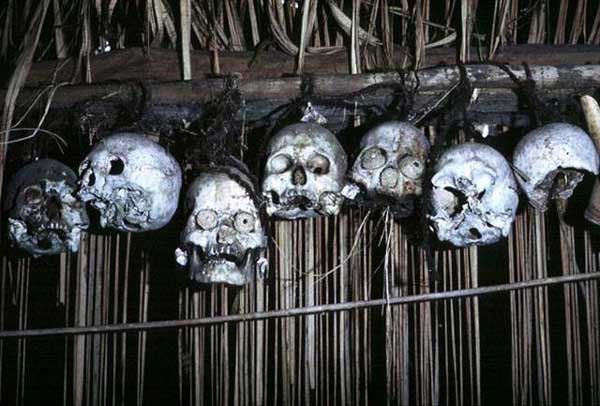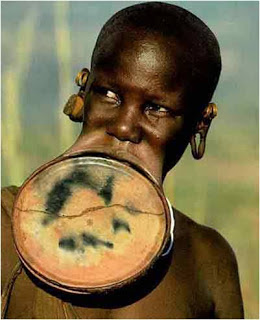Hello friends, today I will discuss on the theme that is different from the usual. Now I will tell you about the crap that is in school. Want to know?? Check this out ^^
Trash and garbage. If you hear these words, everyone is sure to be directly fixed on an object that is so disgusting. Which is usually garbage had a very pungent odor. In fact we will certainly cover our noses when passing a trash or we are passed by a truck with a load of garbage. Waste is material that is thrown from the rest of the day to day activities.
Can we find trash everywhere, including in schools. Lots of trash scattered in the class, field, and others. Although the school has set up garbage cans. To cope with this problem let us think, that trash is part of ourselves. We should keep that garbage in order to remain in place so that our bodies stay awake anyway from sickness. At school we meet garbage belongs in the rubbish bin 2 types of organic and non-organic waste. Organic waste is waste that easily foul. Like the rest of the food, foliage and more. Inorganic waste mostly comes from natural resources, such as aluminum and plastic. Inorganic waste are evident in the school is a form of plastic bottles, plastic bags, cans and more.
How to cultivate organic and inorganic waste in the schools:
Organic and inorganic Waste in the schools we should recycle. Do not throw them away in vain, because this kind of garbage is not easily destroyed. Here we as pupils with a certain organization and especially school employees requires high creativity to transform the trash into an item that has a value. If non-organic garbage we are plastic, metal, glass, paper, and others, maybe we don't have to think long. Because we can sell it to a flea, and we can get the money from the sale of non-organic waste. But we thought if we are the inorganic waste cloth. Can we still make use of them, perhaps we can use a cloth to wipe the table clean, or if we are creative, we can make a rag rug using fabric scraps..
Waste Material (organic), divided 2 i.e. waste organic wet food substances, like the rest of the food (fruit and vegetables)/paper, can be treated using biological processes to compost or known by the term through. The result is a compost that can be used as fertilizer and gas that can be used to generate electricity. The second is waste organic dry, this shit does not have a large water content. An example is the garbage that comes from dried leaves and so on.
Step we can do to reduce waste is scattered about in school is to:
- Held seminars on developing insights into the environment, the development of community-based education, improving the quality of the school and the surrounding environment, development of supporting system which is environmentally friendly.
- Enroll or invest and carry out a program of green schools, by implementing the activities of the pharmacy of life in school, build garbage disposal mechanism in school, get used to saving/recycle all paper and plastic, menhemat use of lights, coolers, classrooms, and water consumption, as well as providing trash bins by type.
- School held an extra based environment such as green or nature lover group, held a work or study tours within the framework of the maintenance and improvement of sanitation and environmental sustainability, and conduct discussions with the teaching and learning process is like watching a movie themed environment.
- Implement conduct hygiene and sustainability group.
- Implement conduct hygiene and environmental sustainability school firmly. To do the supervision and enforcement kedisplinan. Establish special organization to deal with this code of conduct.
- Take advantage of national holidays to care for the environment.
- There behavior teachers to give an example on had to dispose of trash in its place.
- The teachers should be firm by giving sanction or reprimand The students who litter and records it in the book.
· There program Friday. So, every Friday morning the students collected and each class is given the responsibility of each of the schools that have been determined to wipe. And don't forget to each homeroom to guide his students.
To practice the things at the top is not easy. Therefore there are some things we can do and familiarize yourself with the start keep clean in their respective classes, namely:
1. Assemble the officer on duty.
2. clean the slates of each successive hour lessons and home school.
3. Sweep floor scrubbing classes, classes, as well as glass and wiped down the table before the lesson starts and home school. The officer on duty is responsible for cleaning up the classroom.
4. Mutual reminding officers on duty to carry out its obligations.
5. decorate the class by adding a few ornaments tablecloths and the vase on the desk of a teacher or janitor slogans and pictures of the hero. It is intended that students do not saturate the teaching and learning process.
6. do not mencoreti the wall of the classroom, benches, and tables with a ballpoint pen, marker, and others.
7. when there is a friend that Scolds litter.
8. dispose of trash in its place.
Overall cleanliness, atmosphere, as well as the comfort of the environment is the responsibility of all citizens of the school. It will create conditions for students who are intelligent, quality, environmentally as well as being able to apply the attitude of love and caring for the environment. This didactic activities and because of the awareness of citizens about the benefits of treating school environment clean and healthy life. I hope the above discussion can be demonstrated to ourselves that hygiene is very important and beneficial for us. Do not just said but began to do from now on that comes clean and comfortable life.

 Caribbean or the west indies that there is a group of island
in the caribbean sea. These islands from under lying toward the south florida
to northwestern venezuela in south america. At least consists of, 7000 islands
small island, corals and caye. These islands grouped into twenty five areas,
including independent state department, neger and other administrative region.
A west indian name ' the ' derived from christopher columbus idea that thinks
he has landed in india when he actually achieve america. Consisting of large
and caribbean antilles lesser antilles and parts of north america. At a time of
state berumur-pendek called federate west indies consisting of islands in the
caribbean populated speak english.
Caribbean or the west indies that there is a group of island
in the caribbean sea. These islands from under lying toward the south florida
to northwestern venezuela in south america. At least consists of, 7000 islands
small island, corals and caye. These islands grouped into twenty five areas,
including independent state department, neger and other administrative region.
A west indian name ' the ' derived from christopher columbus idea that thinks
he has landed in india when he actually achieve america. Consisting of large
and caribbean antilles lesser antilles and parts of north america. At a time of
state berumur-pendek called federate west indies consisting of islands in the
caribbean populated speak english.


























